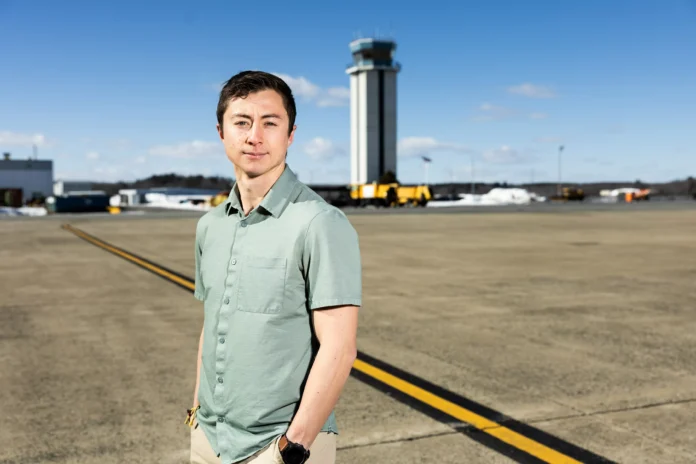U.S. Air Force Engineer and PhD Student Utilizes AI and Imaging Technology for Pavement Damage and Munitions Detection
Randall Pietersen, a U.S. Air Force engineer and PhD student, is making groundbreaking strides in utilizing artificial intelligence (AI) and next-generation imaging technology for detecting pavement damage and unexploded munitions. This innovative approach has captured the attention of both the military and engineering communities, as it has the potential to significantly improve the safety, efficiency, and accuracy of detecting dangerous objects on the ground.
Pietersen, a highly accomplished engineer with years of experience in the U.S. Air Force, has always been fascinated with the possibilities of AI and advanced imaging technology for military applications. As a PhD student at a prestigious university, he saw an opportunity to merge his passion for engineering with his military background and create something truly remarkable.
His research focuses on developing a high-tech system that can identify and classify pavement damage and unexploded munitions on military bases and airfields, where such hazards are often hidden underground or camouflaged. It is a challenging task for human operators to detect these dangers, which can lead to serious accidents and delays in operations. Pietersen recognized the potential of utilizing AI and imaging technology to address this issue.
The system he is developing uses advanced sensors to capture detailed images of the ground surface and feed them into powerful AI algorithms. These algorithms can quickly analyze the images and detect any abnormalities, such as pavement cracks, holes, or underground objects. This information is then relayed to military personnel in real-time, enabling them to take immediate action to mitigate risks and ensure the safety of personnel and equipment.
One of the most impressive aspects of Pietersen’s work is its potential to save time and resources. Prior to the development of this technology, military personnel had to conduct manual inspections of runways and airfields, which was a time-consuming and labor-intensive process. With this new system, inspections can be conducted much more efficiently, reducing the workload on personnel and freeing them up for other essential tasks.
Moreover, the use of AI and imaging technology can significantly improve the accuracy of detecting pavement damage and unexploded munitions. These advanced systems are capable of detecting even the smallest irregularities, which may be missed by human operators. This level of precision is crucial in preventing accidents and ensuring the safety of military personnel.
The potential of this technology goes beyond military applications. It can also be utilized in civilian environments, such as detecting damage on roads and bridges, as well as locating hazards in areas affected by natural disasters. Pietersen’s work has the potential to make a significant impact on the engineering and infrastructure industries as well.
Through his groundbreaking research, Pietersen is not only pushing the boundaries of engineering and technology but also making a valuable contribution to national security. His work has been recognized and supported by the U.S. Air Force, which sees the potential of this technology in enhancing their operations and missions.
Pietersen’s dedication and passion for his work have been instrumental in the success of this project. As a military officer, he understands the importance of his research and the impact it can have on the safety and security of his colleagues. He hopes that his work will continue to evolve and be adopted by the military and other industries, making them more efficient, safe, and resilient.
In conclusion, Randall Pietersen’s use of AI and next-generation imaging technology for pavement damage and munitions detection is a significant breakthrough in the field of engineering and military technology. His innovative approach has the potential to revolutionize the way hazardous objects are detected and addressed, leading to safer and more efficient operations. His work serves as an inspiration to others in the engineering community to think outside the box and find creative solutions to complex problems. We look forward to seeing the continued development and implementation of this technology in the near future.

